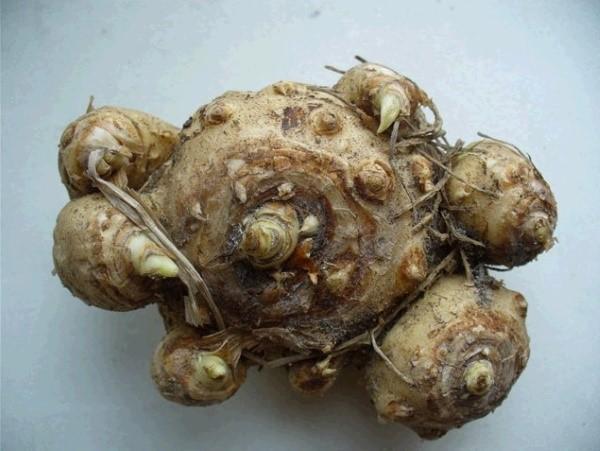How to plant tuberous calla lilies
 Many novice growers, when growing calla lilies, are often faced with the fact that she does not want to bloom. Decay of the plant is no less common problem, and this is due to improper planting, care and watering, because most believe that all calla lilies love moisture. The reason for this confidence is that Ethiopian calla lilies are most often bred. Their root system is represented by the rhizome and really needs abundant moisture.
Many novice growers, when growing calla lilies, are often faced with the fact that she does not want to bloom. Decay of the plant is no less common problem, and this is due to improper planting, care and watering, because most believe that all calla lilies love moisture. The reason for this confidence is that Ethiopian calla lilies are most often bred. Their root system is represented by the rhizome and really needs abundant moisture.
But there are other varieties of a flower that have a tuber instead of a rhizome. It is they who suffer from excessive care, because, unlike the Ethiopian calla lilies do not tolerate high levels of moisture, besides, they have their own cultivation characteristics.
Tuberous calla lilies are hybrids created on the basis of two species (Elliot and Remaney) and have different colors of the bracts, among which all sorts of shades of yellow, red and pink prevail.
How to properly plant tuberous calla lilies so that they delight with their flowering and large beautiful leaves?
Tuber preparation for planting
Like all tuberous plants, calla lilies must be processed before planting, especially if the planting material is not your own, but purchased in a store. This is done for the purpose of disinfection and for the prevention of diseases in the future.
The easiest option is to soak the tuber in a solution of potassium permanganate for a while, but for reliability it is better to use fungicides. A preparation from the Augustine series (for etching planting material) has proven itself quite well. To prepare a working solution, you need to dilute 2 ml of the fungicide in 1 liter of water.
What soil to plant?
The soil for planting calla lilies should be loose and slightly acidic. It is better not to use ordinary garden soil, and even in its pure form - it is too heavy and will dry out for a long time. Such calla lilies grow well in the substrate for Saintpaulius.
For tuberous calla lilies, be sure to choose a pot with large drainage holes so that excess water can drain well. For the same purposes, the bottom of the flowerpot is covered with a good layer of expanded clay.
Features of planting a tuber
So that the flower does not disappear at the initial stage, it must be planted correctly. One of the biggest mistakes flower lovers make is planting the tuber upside down. It is quite logical that after bud germination, they soon die.
The tuber itself has a two-sided structure:
- one side is convex, smooth and relatively flat;
- the reverse side is covered with small tubercles.
The tubercles are not root buds, but growth buds. The tuber should be planted by laying it with the smooth side on the soil, and with the bumpy side up.
And one more nuance: the tuber starts up roots not only in the lower part, but also on the sides and even on top, so it must be sprinkled with earth completely. But it is still not worth deeply deepening - 2 cm is enough, otherwise the roots will grow weak.
Tell me please, if Kalu has already been bought ready-made in the store, but she began to die .... how to transplant the tuber if there are already roots there? Thank.
So your calla lilies still have a tuber with roots or a rhizome? These will be different types of plants. If a tuber variety, then they often die from overflow.Unlike calla lilies, which have a rhizome, tuberous varieties do not like excess moisture, and they need to be watered sparingly. And the soil is needed very light. In general, the transplant procedure is one. Remove the bush from the pot, gently free the root system from the soil. Look for rotten roots or rotting areas on the tuber. If there are any, cut off, including the affected part of the tuber. Sprinkle the slices, treat with a fungicide according to the instructions. Plant in fresh soil.